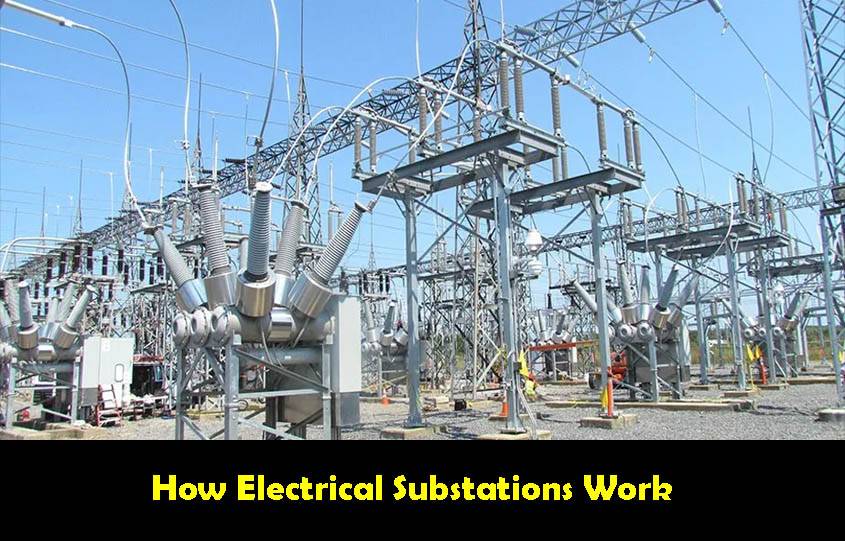The unsung heroes of our contemporary power distribution systems are electrical substations. Uncover the mysteries of how electrical substations work. Explore the inner workings and vital components of electrical substations, from transformers to circuit breakers. These inconspicuous establishments are essential to making sure that the electricity produced by power plants reaches our residences, places of commerce, and industries. We’ll delve into the intriguing world of electrical substations in this post, examining their parts, operations, and their crucial role in preserving a steady and dependable power supply.
Electrical Substations’ Function:
These days, electrical substations are often unseen yet crucial components of our electrical infrastructure. These inconspicuous establishments are essential to making sure that the electricity produced at power plants is delivered effectively and safely to our homes, workplaces, and businesses. Substations are fundamentally transformers of voltage; they increase or decrease electrical voltage levels to enable smooth power distribution and transmission. It would not be feasible to use the electricity produced for daily needs without these essential hubs.
Aside from converting power, electrical substations maintain the stability of the system. They are armed with advanced control and safety mechanisms that react quickly to malfunctions, averting possible calamities and reducing interference with our power supply. The vital importance that these frequently disregarded substations play is something we must comprehend in order to fully appreciate the dependability of the electricity that drives our lives. We’ll go more deeply into their internal operations and the wider effects of their capabilities in this piece.
Electrical Substation Components:
1. Transformers: The core of any substation is this device. Transformers adjust the voltage of electricity to suit the needs of distribution and transmission. Step-down transformers lower voltage for local distribution, whereas step-up transformers raise voltage for long-distance transmission.
2. Circuit Breakers: Essentially switches, circuit breakers have the ability to stop and restart electrical current. They are essential in preventing overloads and short circuits on the grid. Circuit breakers isolate the defective area when a fault arises to avoid widespread outages.
3. Busbars: Within the substation, busbars are conductive bars or systems that transport and distribute electrical current. They ensure effective energy flow by acting as a central point of connection for different components.
4. Switchgear: Switchgear includes several types of fuses, switches, and other control mechanisms. It enables safe control, protection, and isolation of electrical equipment by operators.
5. Protection and Control Systems: State-of-the-art protection and control systems are installed in substations nowadays. By automatically detecting defects, monitoring equipment health, and initiating precautionary steps, these systems lower the likelihood of significant interruptions.
How Electrical Substations Work:
1. Elevate Transmission: Power plants normally produce their electricity at a lower voltage. Substation step-up transformers raise this voltage to facilitate effective long-distance transmission while minimizing energy loss.
2. Transmission Lines: Huge networks of subterranean or overhead lines, spanning entire nations, are used to transport high-voltage energy.
3. Step-down Distribution: Power is reduced in voltage as it gets closer to inhabited areas by means of substations that have step-down transformers installed. It is now safe to distribute to residences and places of business.
4. Local Distribution: Before the power reaches individual customers, it is first delivered via local distribution lines, which are frequently buried or installed atop utility poles.
Ensuring Reliable Power Supply
Modern civilization depends on a steady supply of power, and electrical substations play a crucial role in ensuring this vital service. These modest facilities put forth endless effort to guarantee that our homes, companies, and industries always have access to electricity.
Voltage regulation is one of their most important functions. Transformers are used in electrical substations to adjust voltage levels, allowing power to go across great distances effectively and with little loss. Power plants can now transport electricity to even the most remote areas of the system thanks to this technology.
Substations also have sophisticated control and protection systems installed. These systems automatically trigger preventative steps, quickly identify and isolate defects, and keep an eye on the overall health of the machinery. Substations keep our lives going smoothly and protect against any disruptions brought on by unforeseen events like storms, equipment breakdowns, or accidents by minimizing the chance of lengthy outages. Electrical substations are essentially the unwavering protectors of our power supply, making sure we always have the energy we require.
In summary
Although the general public may not pay much attention to electrical substations, they constitute the foundation of our power distribution system. Every part, from circuit breakers and transformers to protective systems, functions in unison to distribute electricity in a reliable and safe manner. Gaining insight into the internal operations of electrical substations enhances our comprehension of the complex system that drives our contemporary society.

